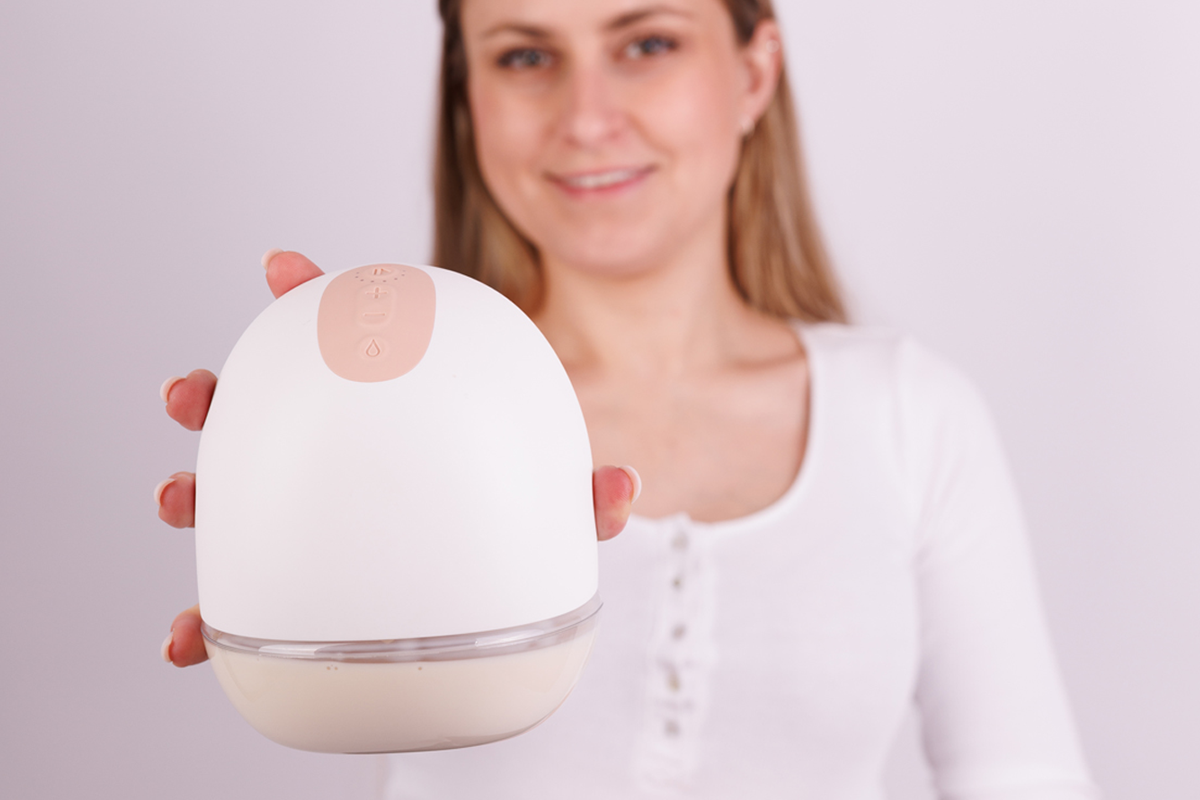Breastfeeding and pumping can be a journey full of surprises. One common and frustrating scenario is when your breasts feel full, but no milk comes out when pumping. If you’re pumping but no milk is coming, or your breasts aren’t responding to the pump anymore, you’re not alone. This article explores the reasons behind this issue and offers practical solutions, using evidence-based guidance.
Common reasons for low or no milk output while pumping
Letdown reflex not triggered
The letdown reflex is essential for milk to flow. If it’s not triggered, you may notice your breast feels full but nothing comes out. Stress, anxiety, or discomfort can inhibit this reflex, making it difficult for milk to be released during pumping. Sometimes, simply being away from your baby or not feeling relaxed can prevent letdown.
Clogged or blocked milk ducts
A clogged duct can create a painful lump and block milk flow, leading to the sensation of fullness without milk output. In fact, milk flows through a duct system in your breast.
💡 Sometimes inflammation of the surrounding breast tissue causes narrowing of the ducts which causes milk to stop flowing well.
It can be caused by infrequent emptying, tight clothing, or changes in feeding patterns.
Wrong flange size or poor pump fit
Using the wrong flange size or a poor pump fit can significantly affect milk expression. If the flange is too small or too large, it may not create an effective seal or could cause discomfort, both of which can reduce milk output.
💡 Checking your pump’s fit and adjusting as needed is crucial.
If you’re unsure about your fit, consult a comprehensive flange size guide to ensure you’re using the correct size for your comfort and efficiency, or ask a lactation consultant.
Stress or discomfort
Stress is a major factor that can reduce milk supply and inhibit letdown. High stress levels, lack of sleep, or discomfort during pumping sessions can all contribute to poor milk output.
💡 Creating a calm environment and practicing relaxation techniques can help.
Some women say that looking at a picture of their baby while pumping helps too.
Pump not efficient or needs replacement
If your pump is old, damaged, or not powerful enough, it may not effectively stimulate your breasts. Even a small crack in a pump part can reduce its efficiency. Regularly inspect your pump and replace parts as needed.
Baby drains breast better than pump (normal variation)
It’s normal for some mothers to notice that their baby is more efficient at draining the breast than a pump. Babies use a different sucking pattern that stimulates milk flow more effectively, so pumping output may be lower even if your breasts feel full.
What to do if you're getting no milk while pumping?
The Perifit Pump offers hospital-grade suction similar if not better than many larger, non-wearable pumps. However, how each person will respond to a new pump is very individual and difficult to predict.
Here are some strategies to get your body used to a new pump, and some tips to check out to get the most out of your Perifit Pump.
Warm compresses before pumping and breast Massage for clogged duct
Applying a warm compress and gently massaging your breasts before pumping can help stimulate milk flow and resolve minor blockages. Breast massage is especially helpful if you suspect a clogged duct.
Practice relaxation techniques to trigger letdown
Relaxation is key to triggering the letdown reflex. Deep breathing, mindfulness exercises, or listening to soothing music can help reduce stress and encourage milk flow. Looking at photos or videos of your baby can also help stimulate letdown.
Check your pump assembly
This is really the first thing to check because it can easily solve your problem! The assembly is very important because a part that is not perfectly assembled or pushed in can cause a small air leak and therefore a big drop in the performance of your breast pump. Most importantly, please check that:
- All components are clean and dry
- The flange is the right way around and pushed all the way into the connector.
- The milk valve is pushed all the way into the connector.
- The connector is well positioned into the pump hub, you hear a clic when you insert it
- The diaphragm is well positioned and moving up and down when the pump is ON.
Discover in this video how to assemble the Perifit Pump for a successful pumping session.
Make sure your flange is the right size
Using the correct flange size is essential for both effective suction and comfort during your pumping sessions. Your needs might change throughout your breastfeeding journey, so it’s important to regularly check that your flange still fits you well.
How to check if you're using the right size:
- Measure your nipple.
- Check the size of your flange – it’s written on the side of the flange.
- Do a visual fit check: Center your nipple in the flange. It should move freely without rubbing against the sides, but there shouldn’t be too much extra space either. (You can do this in front of a mirror.)
Make sure your pump is well positioned on your breast during pumping
Before and during your pumping session, make sure the pump is correctly positioned and hasn’t shifted:
- The nipple should be centered in the flange
- There should be no gap between the flange and the breast
- Your pumping bra should fit firmly enough to hold the pump securely in place, without compressing the milk ducts, so milk can flow freely.
If positioning feels tricky, here’s a simple method to get it right:
- Test with your hand first – Hold the pump in place with your hand on your breast, turn it on, and watch (using a mirror if you can) to see which position and compression let milk flow best.
- Adjust your bra to match – Once you’ve found the right hold, tighten or loosen your pumping bra so it mimics the same level of support.
Extra tips:
- If the pump moves or you notice a gap during pumping, tighten the bra straps or try a better-fitting bra for improved support.
- If your breast feels overly compressed or you see red marks, loosen the fit slightly.
It might take a few tries to find your perfect fit, but once you do, it’ll become second nature with time and practice.
Frequency of replacement of the silicone parts
💡 Regularly check the condition of your silicone parts.
If you notice any deformation or cracks, it's time to replace them. Even if there’s no visible damage, we recommend replacing the silicone parts every 3 months to ensure optimal performance. For more details on maintaining your pump and to learn exactly how often to change pump parts, refer to our comprehensive guide.
Recommended replacement guidelines:
- the valve every 1 to 3 months
- the diaphragm every 3 to 6 months
- the joint every 3 to 6 months
- the flange every 3 to 6 months
Try hand expression to stimulate flow
Hand expression can be used before, during, or after pumping to stimulate milk flow, especially if the pump alone isn’t effective. This technique can also help relieve engorgement or clear a clogged duct.
Consider power pumping to increase supply
Ideal for boosting milk supply through an extended and varied pumping routine. Power pumping is designed to mimic cluster feeding and is known to help increase milk supply. This program includes multiple pumping and pause phases for an hour. For optimal results, use this program three times a day for three consecutive days.
Following a consistent pumping schedule and using expression mode can also support milk production.
Nurse baby before pumping if possible
If you’re combining breastfeeding and pumping, try nursing your baby before. Babies are often more effective at emptying the breast, which can help stimulate further milk production.
Is it normal for pumping output to vary?
Yes, it’s normal for pumping output to fluctuate.
💡 Factors such as time of day, stress levels, hydration, and even hormonal changes can influence how much milk you express during each pumping session.
If your breasts are not responding to the pump anymore, it may be due to any of the reasons above, and often, simple adjustments can help.
Remember, breast size does not affect milk production; milk supply is determined by demand and effective emptying of the breast, not breast size.
Feeling your breast full but no milk when pumping can be discouraging, but it’s usually a temporary and solvable issue. By identifying the underlying cause—whether it’s letdown difficulties, clogged ducts, poor pump fit, or stress—you can take targeted steps to improve your milk output. Don’t hesitate to reach out to a lactation consultant for personalized support, and remember that your well-being is just as important as your baby’s nutrition.
Sources:





